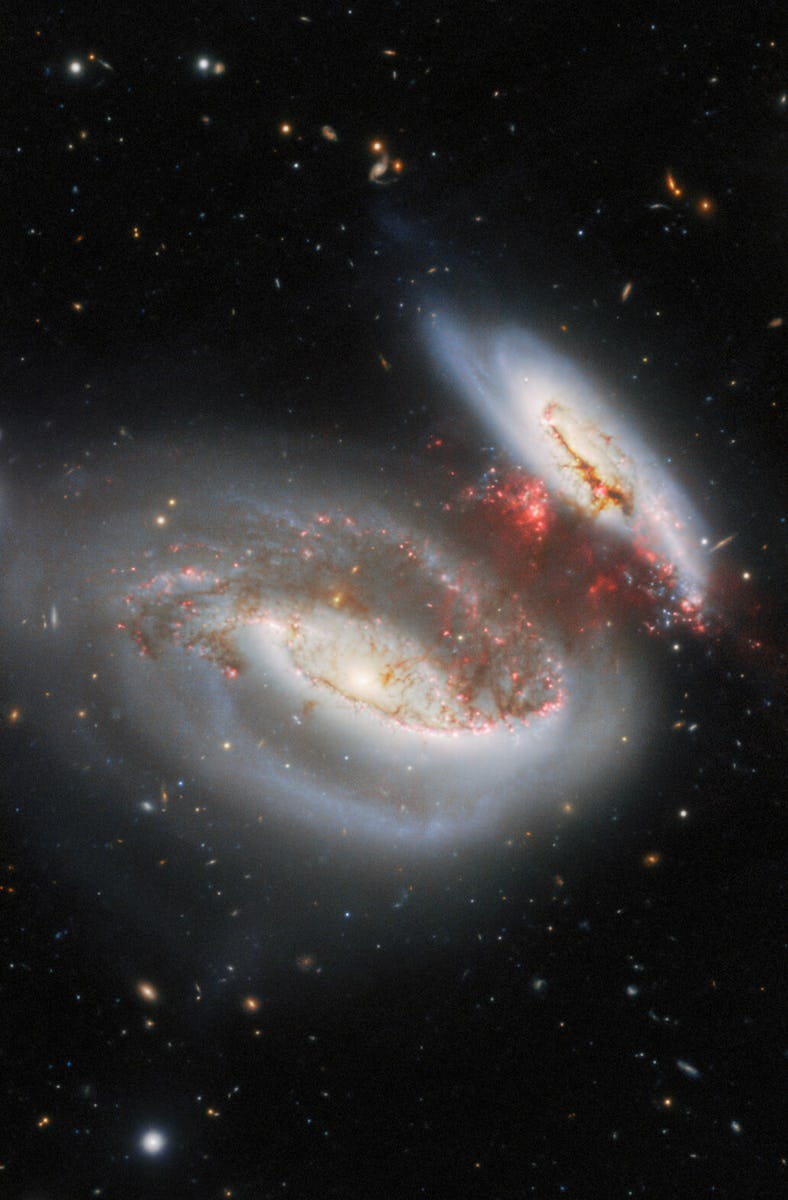Look! Astronomers Capture Stunning Image of an Intergalactic Hit and Run
Galactic collisions usually result in huge bursts of star formation, but the head-on crash between the Taffy Galaxies is different.

A bridge of roiling gas stretches like taffy between two galaxies as they pull apart after a dramatic hit-and-run collision.
Twenty-five million years ago and 180 light years away, two spiral galaxies plowed into each other head-on and kept on going. A team of astronomers, led by Analia Smith of Argentina’s Instituto de Astrofisica de La Plata, recently captured this stunning image of the aftermath.
The thin brown filaments of gas in this image are mostly hydrogen, while the red clumps are clouds of molecular hydrogen: pairs of hydrogen atoms joined together. Normally those clumps would be ideal places for new stars to form, but the gas is still so turbulent after the collision between the two galaxies that star formation is impossible, even 25 million years later.
When galaxies collide, they often clip each other in passing or fall into a gradual spiral that ends in a merger. The process compresses and heats interstellar gas in both galaxies, usually triggering waves of star formation.
But when the spiral galaxies UGC 12914 and UGC 12915 slammed into each other 25 million years ago, their momentum carried both galaxies through the collision and out the other side, with both galaxies trailing gas in their wakes: the glowing bridge of turbulent gas we see in the recent image from the Gemini North Telescope. And the sheer violence of this particular collision left the gas too turbulent to settle and collapse into stars. That’s why the taffy-like bridge stretching between the retreating galaxies is empty of star formation despite the clumps of potential star stuff between the delicate-looking filaments.
The two galaxies keep moving apart, stretching the gas between them and earning the pair a shared nickname: the Taffy Galaxies.
At first glance, galaxy collisions might look destructive, but they actually helped build the large, intricately-structured galaxies we see in the modern universe. Earlier in the universe’s history, smaller, simpler galaxies collided with each other and merged into larger ones, eventually building up galaxies like ours — and like the Taffy Galaxies. And that process isn’t over; in about 5 billion years, our galaxy will merge with one of our nearest large galactic neighbors, the Andromeda Galaxy.
This article was originally published on